How to control manufacturing costs in product design
What stands as the important equation in product design? It’s certainly not the the various principles for finite element calculations or even Bernoulli’s law for fluid dynamics. Rather, the most pivotal equation revolves around the manufacturing costs of a product. Whether you appreciate it or not, if your sales price is perceived as too high relative to its value, your product won’t succeed. In such cases, the best outcome might be seeing your prototype in a museum, which hardly aligns with the objectives of product design. Thus, estimating product cost throughout the design process is absolutely crucial, in this blog we explore the parameters which make up a cost price and how we control them at ManGo.
Materials
The first part of the production costs equation is about materials. For example, when moulding parts, you’ll need materials like plastic pellets. The price per kilo varies enormously based on the type of plastic selected and quantity purchased. Ordering 750 kg for 5.000 units will have a different price per kilo compared to 7.5 tons for 50.000 units. Economic theory generally suggests that costs decrease as scale increase. Typically, a tenfold increase in quantity results in about a 20% reduction in cost. For example, ordering 7.5 tons would cost around 80% per kg compared to ordering 750 kg. Extending this, a 1,000-fold increase in scale would result in roughly half the original cost. These figures are illustrative; in the design process we always consult suppliers for accurate cost prices. For certain products surface finishes are also essential due to aesthetic requirements or for protection against the elements. For example: coatings, galvanization, anodizing or metallization. These finishes can often be as costly as the part to which they are applied.
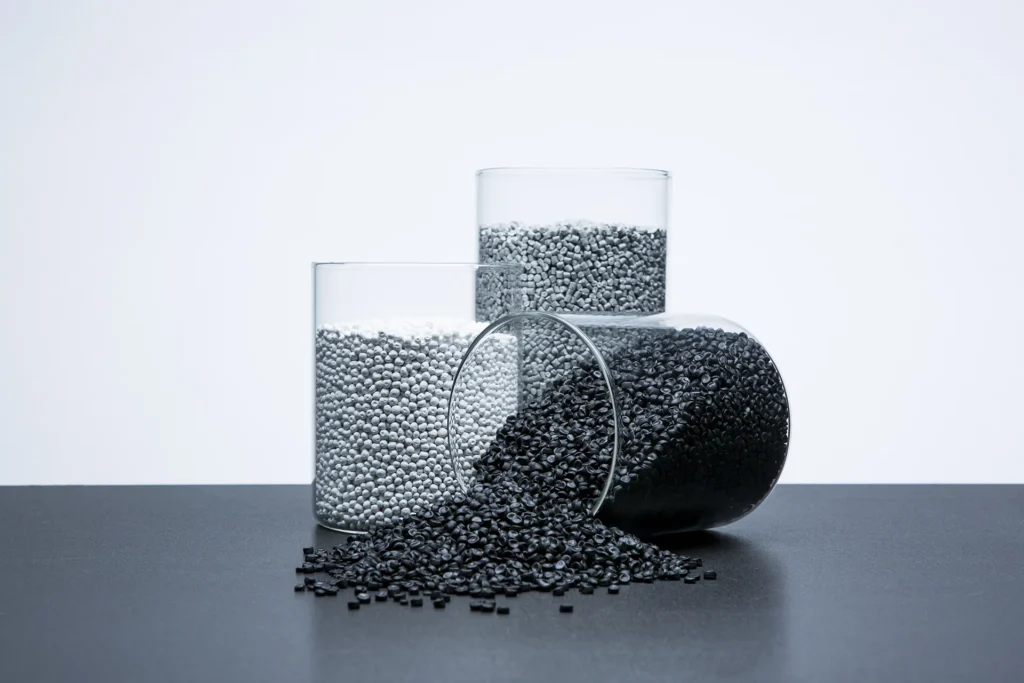
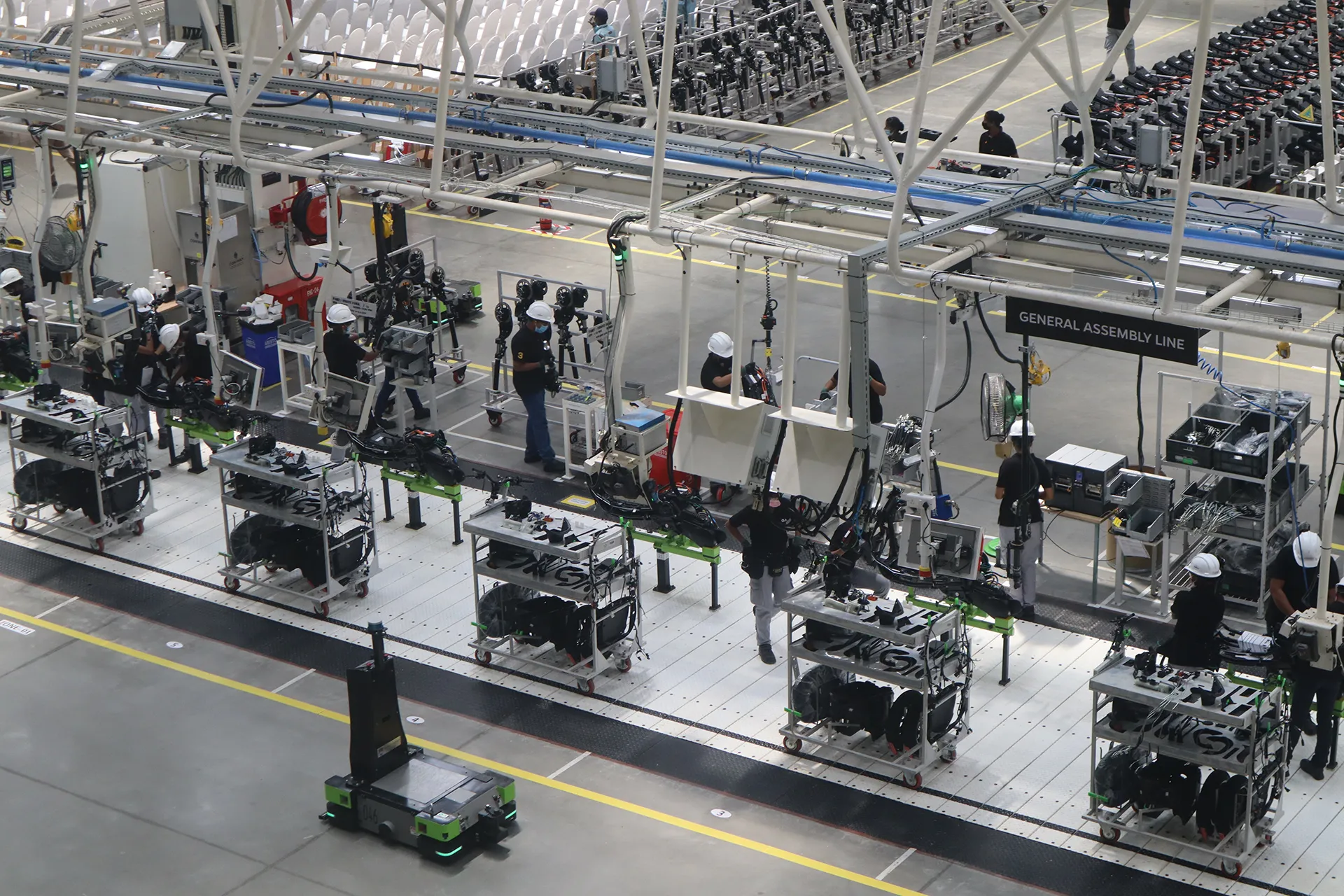
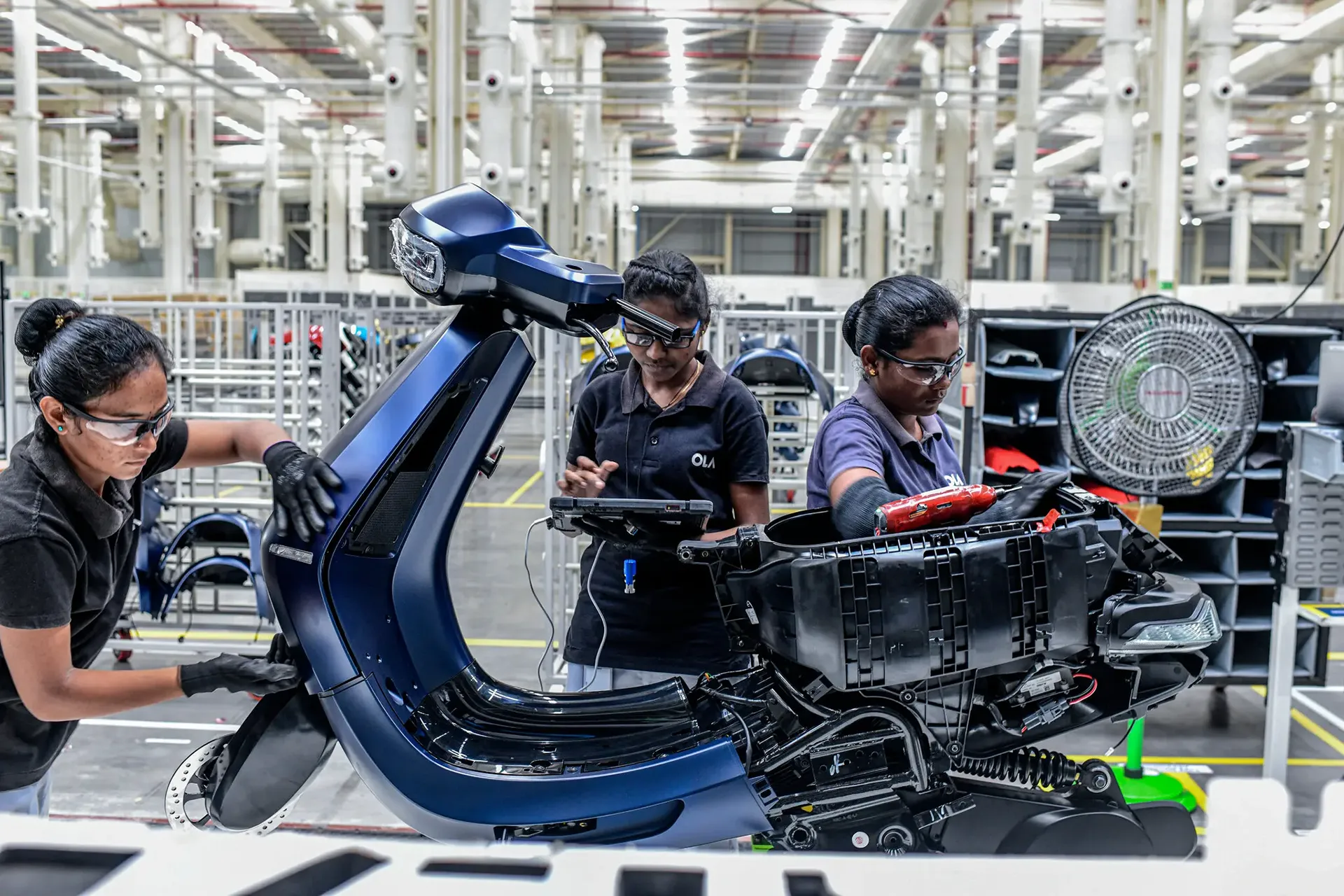
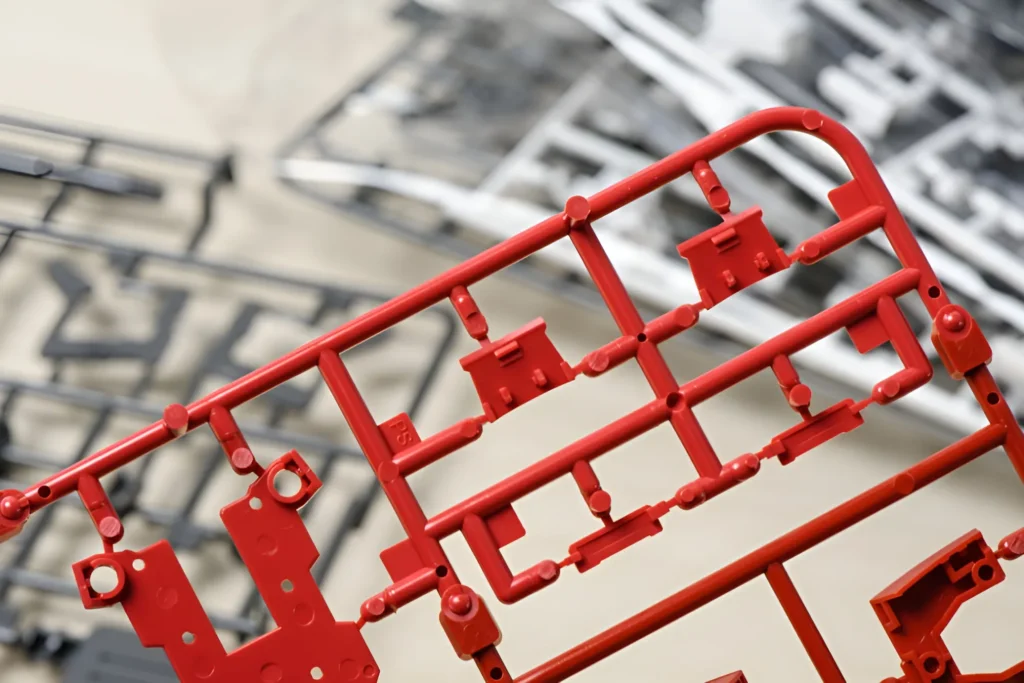
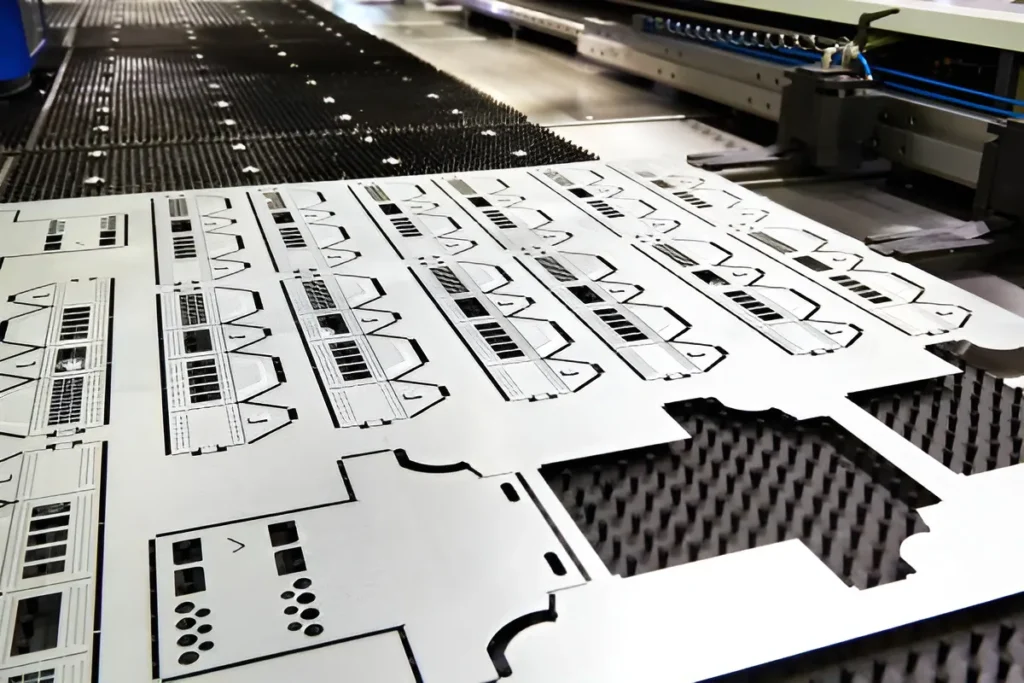
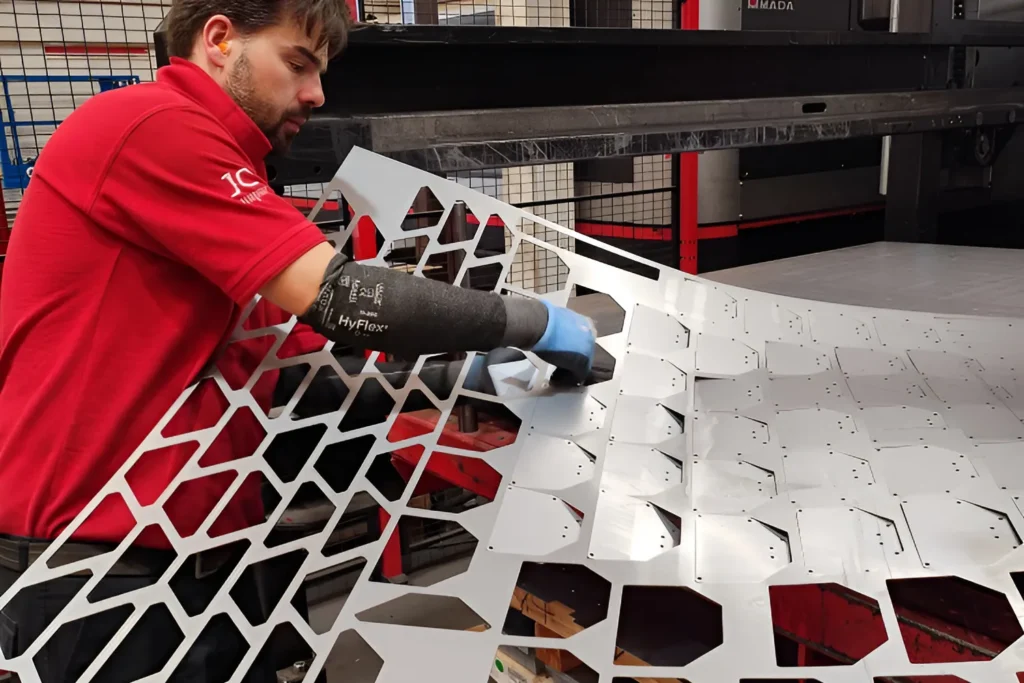
Production waste
In production costs calculations we must always consider the gross/net ratio, which accounts for production waste in manufacturing processes. For instance, in injection molding of plastics waste is minimal and easily recyclable at the factory, resulting in a minimum or no added costs. However, in sheet metal production, waste can often equal the product, resulting in a ratio of about two. This waste may need external recycling, often at a lower value than the material’s original cost, or even disposal, impacting manufacturing costs significantly.
Components
With component costs it works similar as with materials. Ordering in larger quantities typically yields better prices, influenced by factors such as sourcing location and quality standards. It’s important to differentiate between standard components (like screws) and product-specific ones. For example, when developing electronic devices, items like the PCBA are specific, while the display and power supply are likely standard (off-the-shelf). Our experienced designers are adept at navigating available options and pricing as well as being mindful of suppliers’ minimum order quantities (MOQs), as what seems a significant volume to you may be small for them.
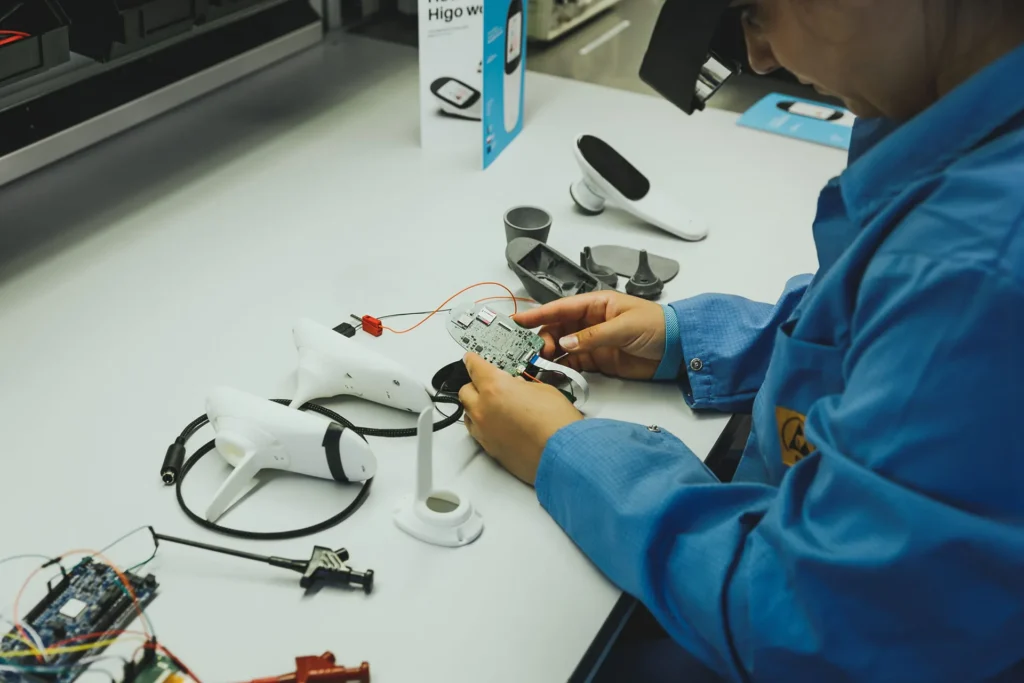
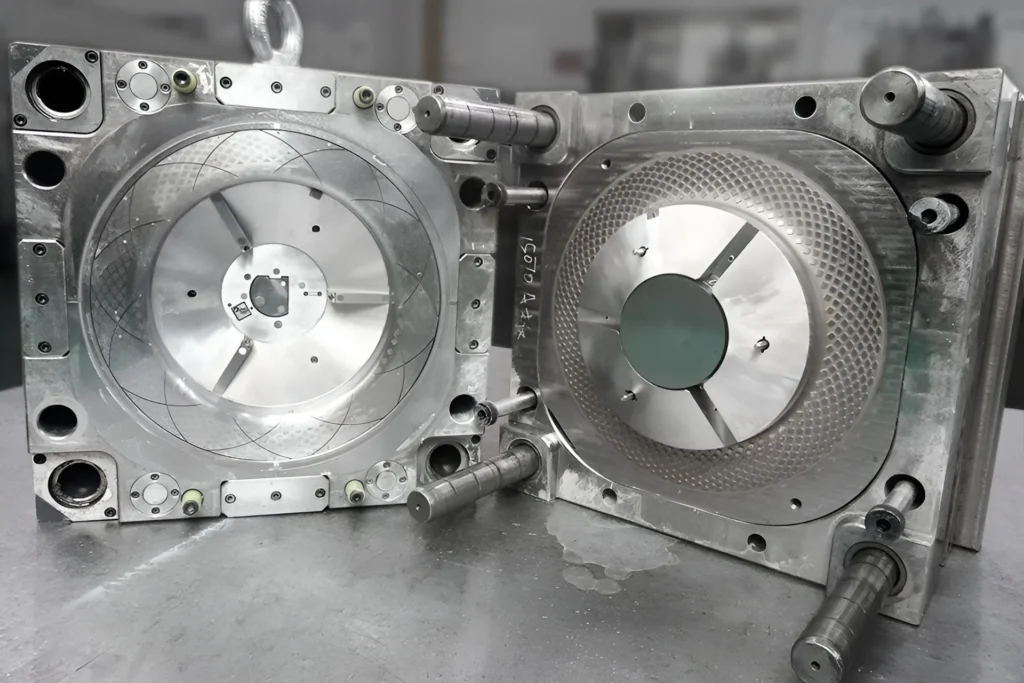
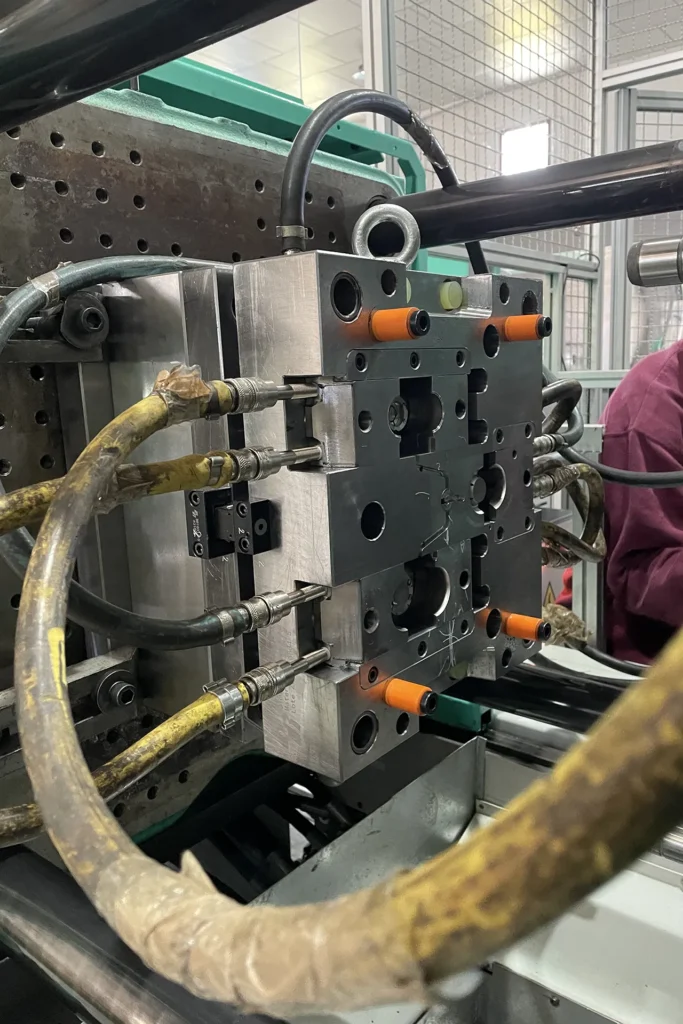
Machining
An important part of manufacturing costs, usually indicated as €/hour for a given machine. As an example, we’ll use an injection molding, which can vary a lot in costs. The size and geometry of the part play a large role in the size of the required machine, smaller machines cost on average around €40/hour in the EU. So, with a production cycle time of 30 seconds per part (e.g. small housing component), the machine cost per product is approximately € 0,33. Scaling up production beyond tens of thousands of units allows for using a multi-cavity mold, increasing efficiency. While a larger machine is needed, the increased production speed makes up for that. Machine costs also vary by location; for example, in the USA or Northern EU, it might be € 40,- per hour, while in Eastern Europe, it could be around € 25- and in places like China it may even drop to € 15,-. And of course the bigger the machine the higher the costs.
Labor
Operating machines requires human supervision, but the extent of this is influenced by automation, production volume and investment in tools. In modest batch production, one well-trained operator can oversee an average of six machines, so the cost is often marginal. However, labor-intensive assembly of X number of minutes per product at rate Y per hour often has a significant impact on manufacturing costs. For high-volume production, we therefore replace screws with snap-fits, which requires more investment in molds but results in benefits such as faster assembly. Moreover, investing in assembly tools can further reduce labor costs. Typically, these measures result in a unit cost reduction of 30% at a scale of ten. The value of Y depends on wages in the country of manufacture. At ManGo, we work with a global network of manufacturers, which enables us to achieve competitive production costs.
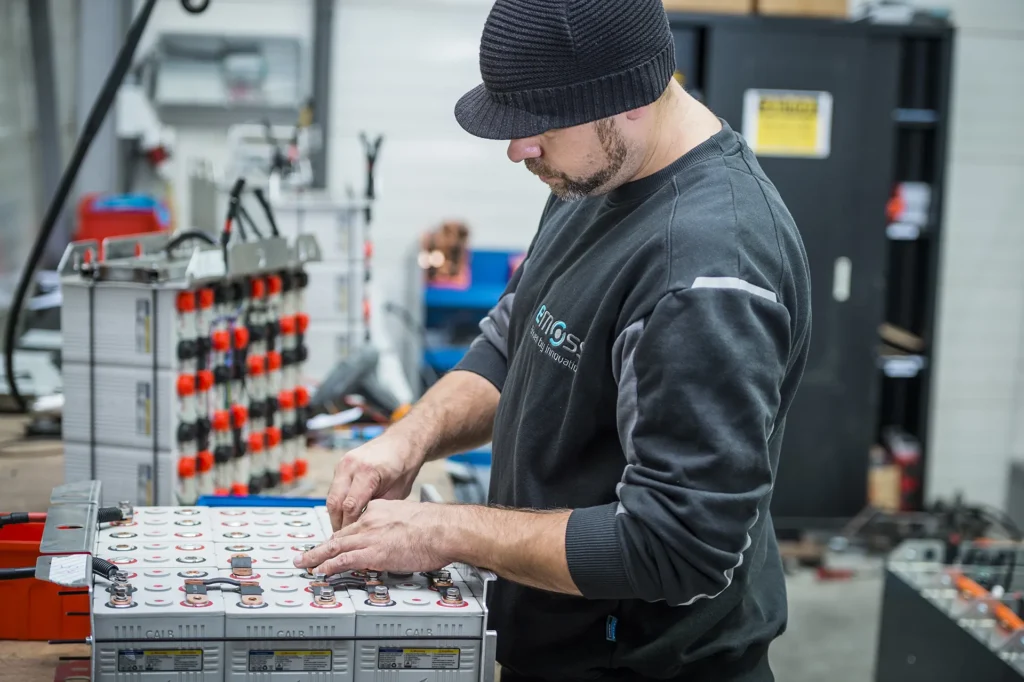
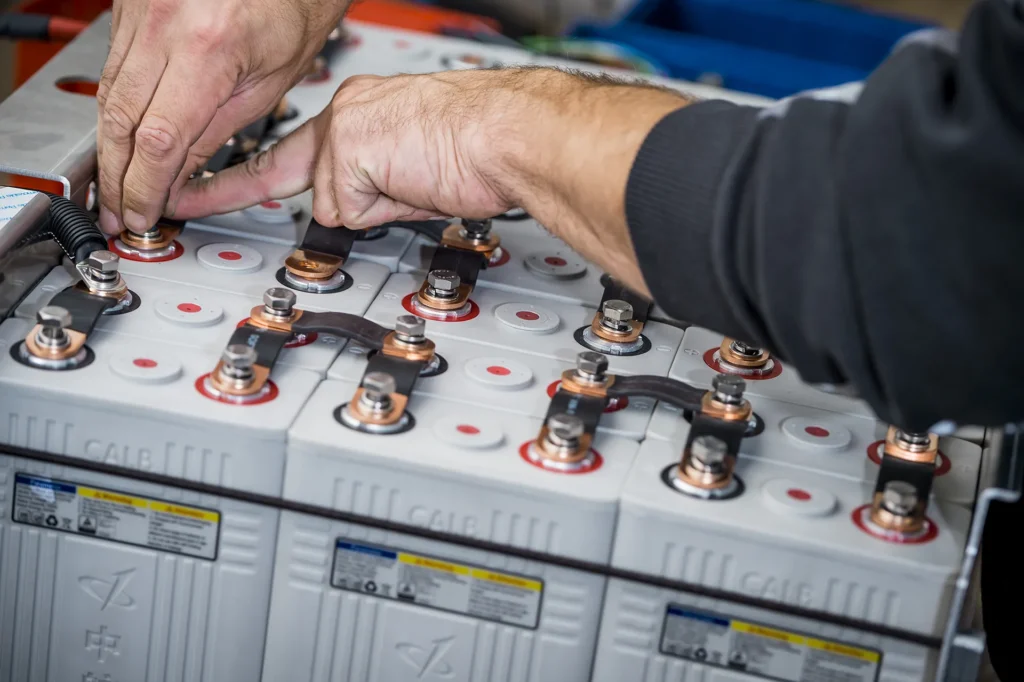
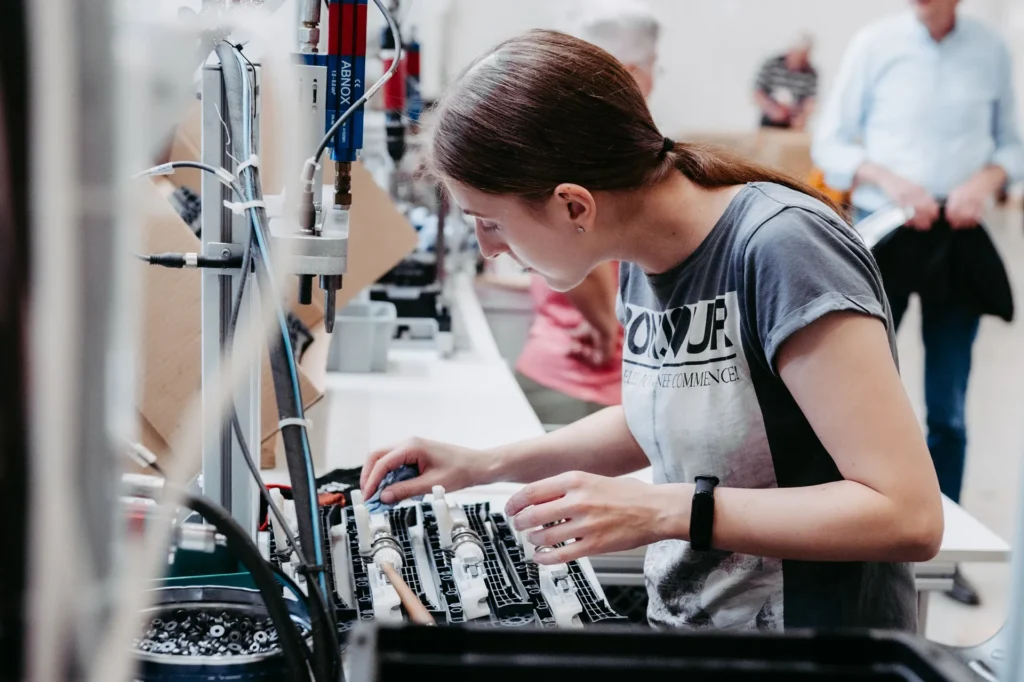
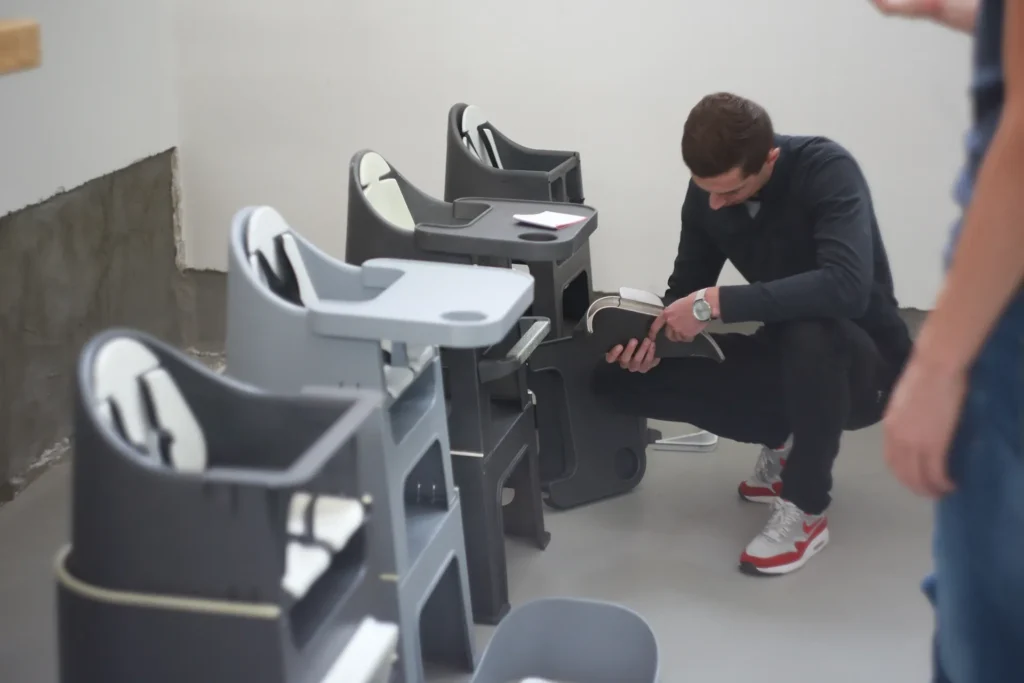
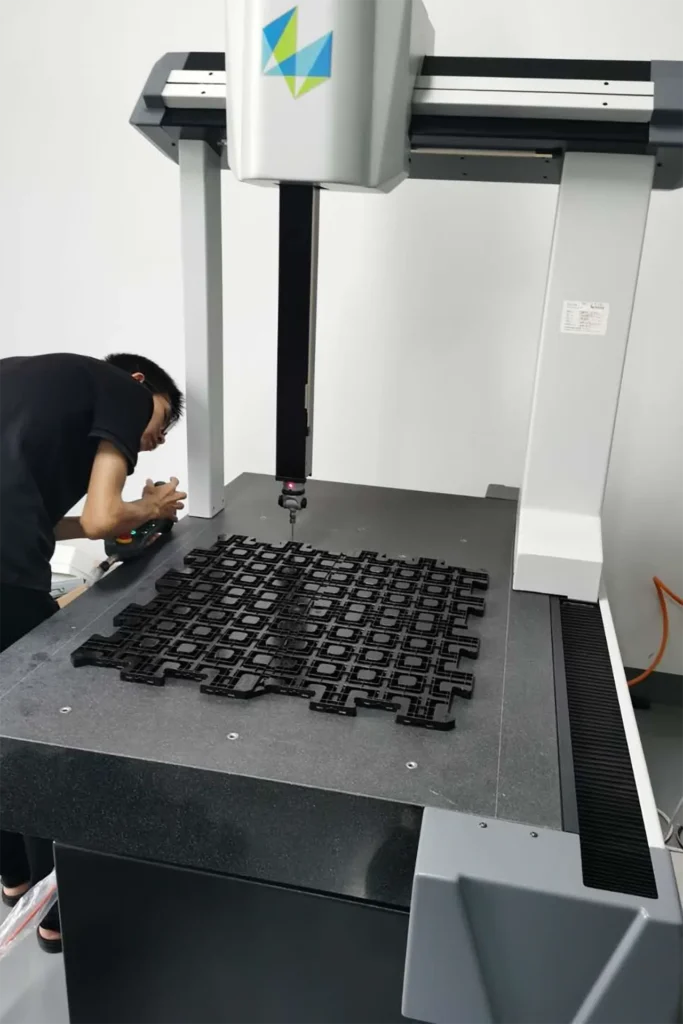
Quality control
Quality Control (QC) any type of product is essential to ensure it functions correctly. Typically, this involves random sampling, with minimal impact on cost price—just one inspector checking every 20th product. However, for safety-critical items or medical devices, inspection may be necessary for each product, significantly increasing manufacturing costs. Additionally, inspection requires skilled personnel, can be time-consuming, and may involve expensive equipment such as X-ray machines. Paperwork is also involved to handle warranty claims. Any defective products require rework or scrapping, further increasing costs. For simple electronic devices, inspection in general adds around € 0,50 per product at 5.000 units, with a potential 30% reduction at higher volumes. At ManGo, we aim to develop QC procedures that are efficient, ensuring quality without significantly increasing your cost price.
Packaging
This involves making the suitable box (or other packaging) for your product and the associated labor, typically conducted after quality control by the assembly partner. It could also mean the need foam or cardboard inserts for fragile items, desiccant sachets to keep out moisture and mandatory documents like a user manuals or warranty. All these things cost money. For a small and simple product packaging adds about € 0,50 to € 1,- of production costs at 5.000 units, with costs lowering as volumes increase. Additionally, good packaging not only protects the product but also enhances the unboxing experience, which is increasingly important in design. Manufacturing costs can increase substantially if you opt for luxury materials and finishes to provide a premium brand and unboxing experience.
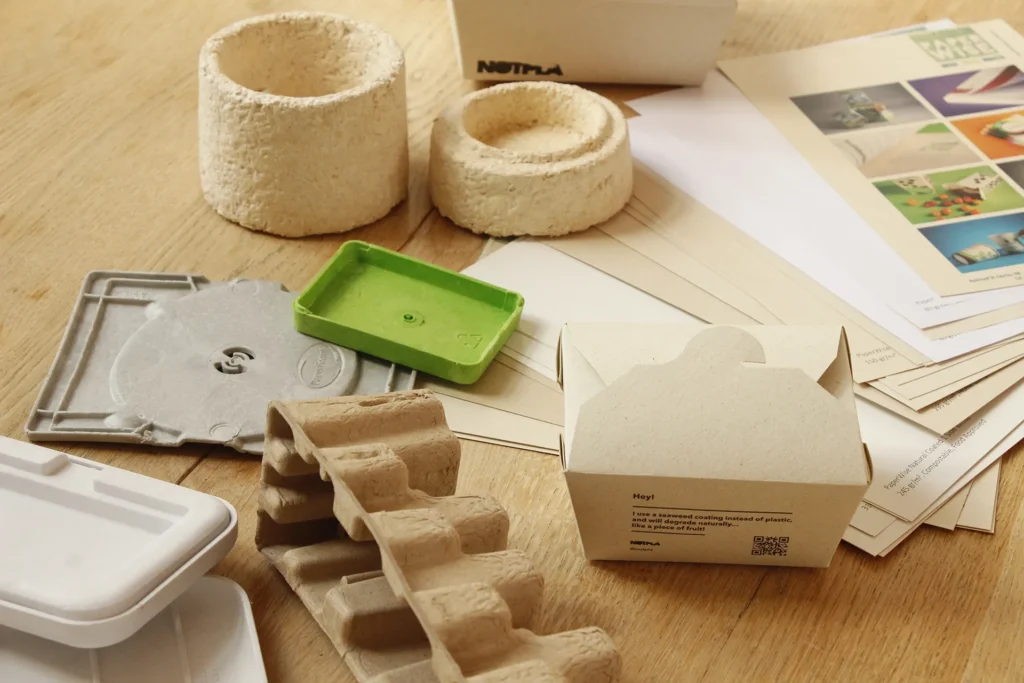
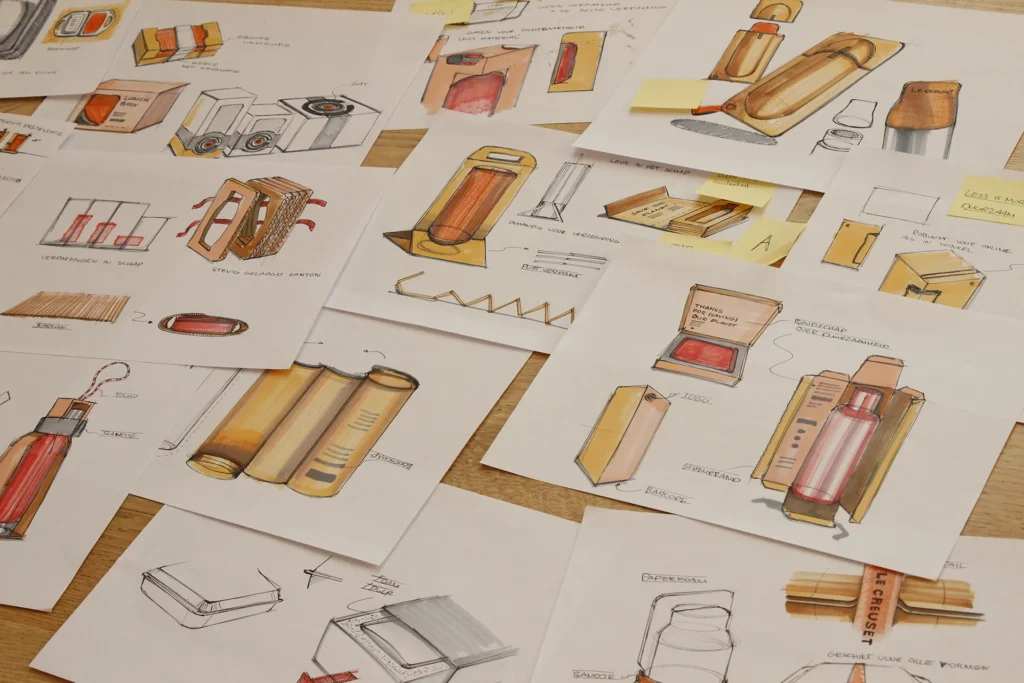
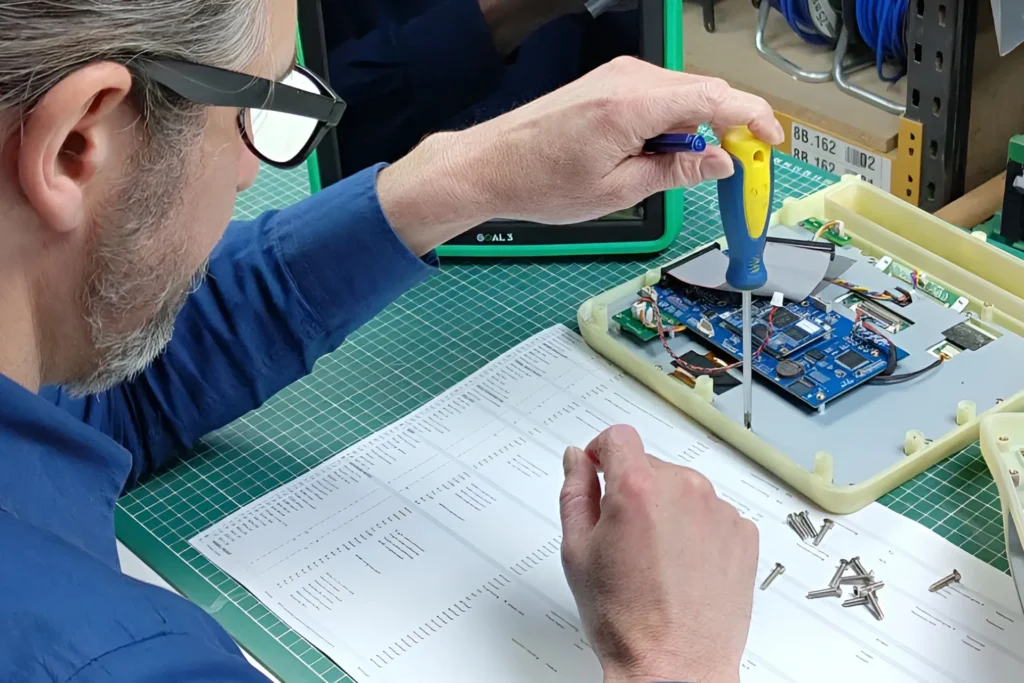
Conclusion
At ManGo Product Design, we believe that managing production costs is vital for crafting a successful product. By sourcing suitable components, selecting optimal materials, optimizing Design For Assembly, obtaining quotes from various manufacturers and keeping an accurate bill of materials, we can reduce overall manufacturing costs without compromising quality. Our knowledge of many different manufacturing processes and their cost considerations empowers our designers to make informed choices, resulting in successful product designs for our clients. And don’t forget besides production costs of course there are additional expenses to take into account as well, for example: import tariffs, customs fees, logistics, amortization of molds, etc.
More information
Are you also interested in developing a product that can be made at just the right cost price? Contact us by phone, our online form or send an e-mail to: